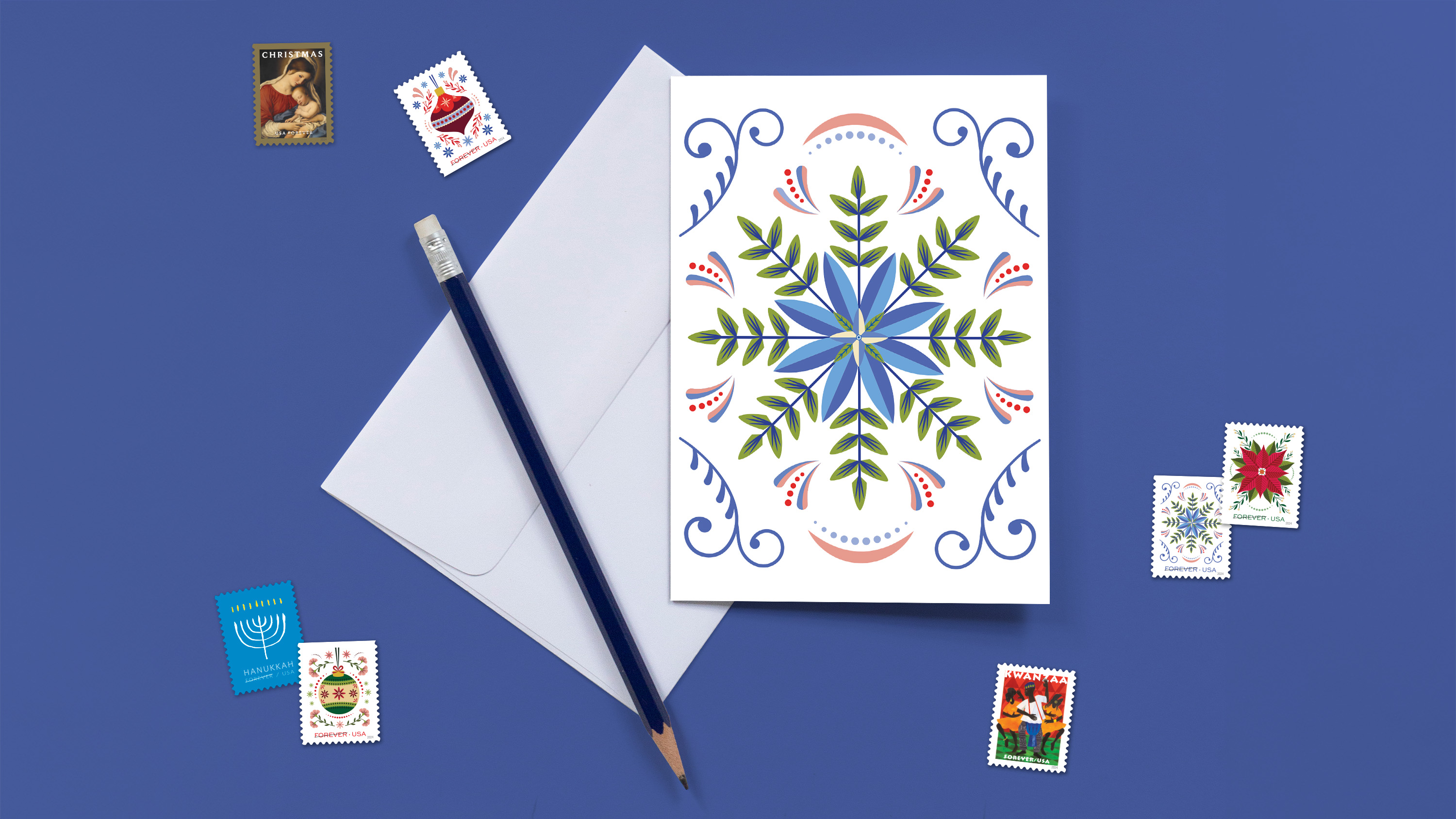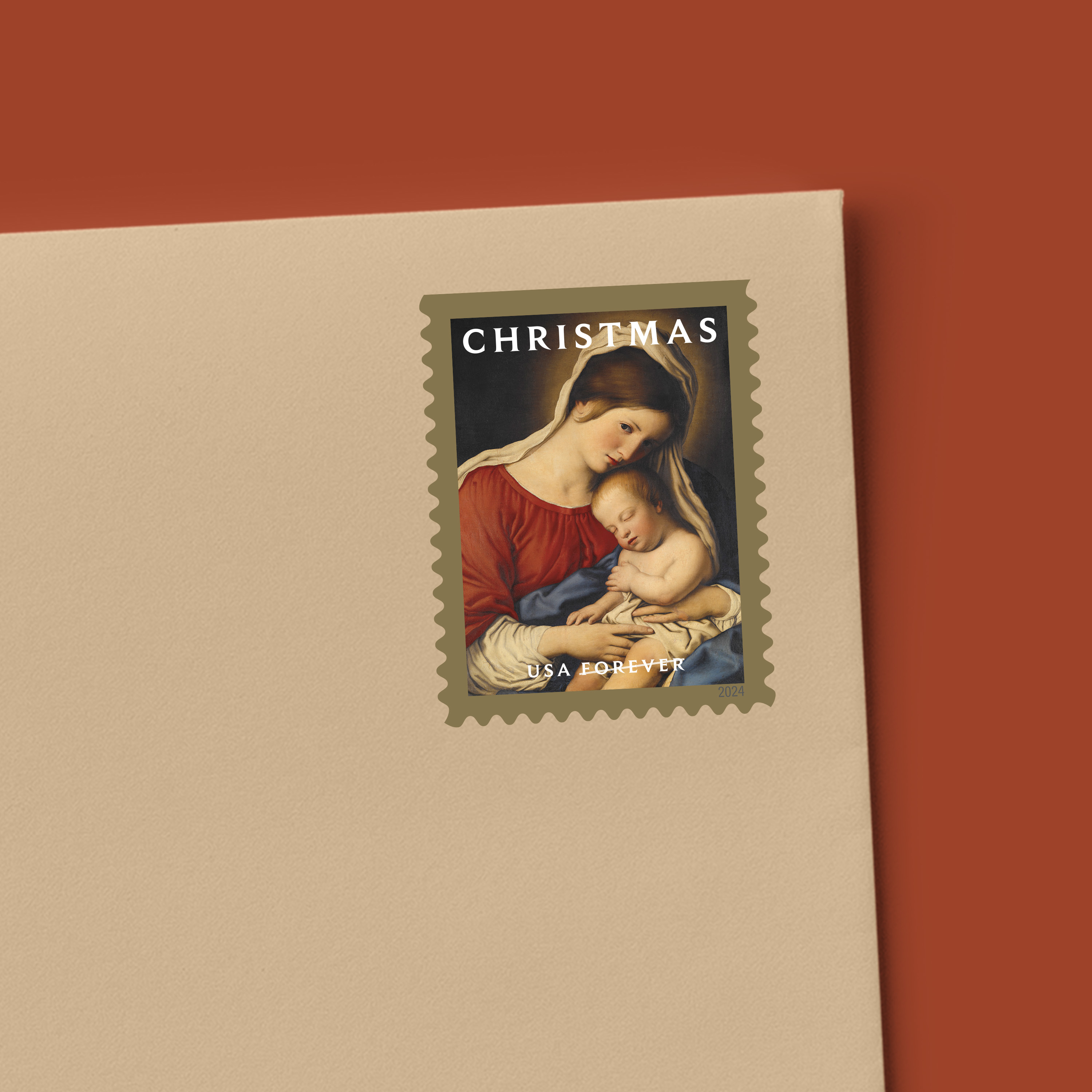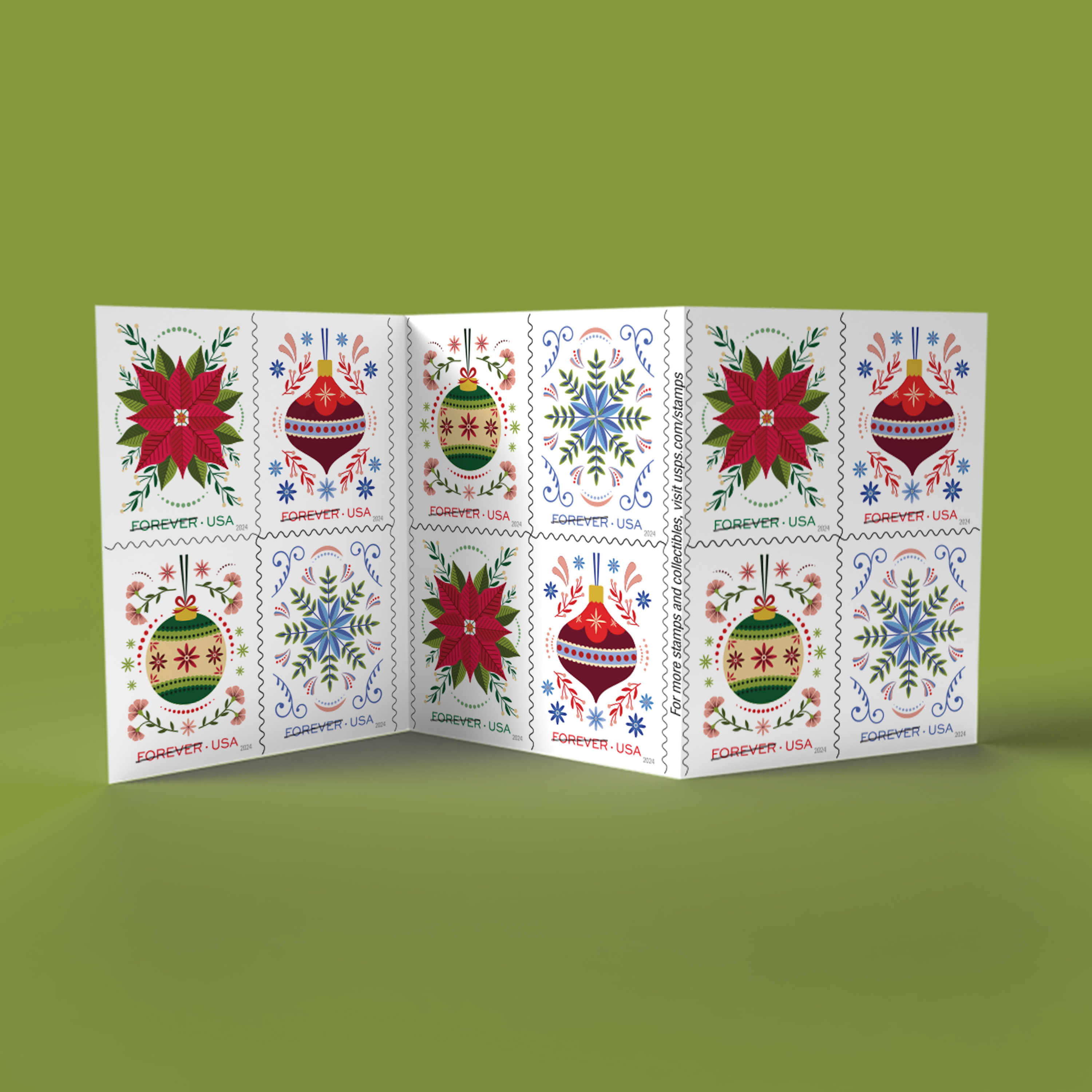
Holiday Cheer in Miniature
This year’s winter holiday stamps — Christmas Madonna and Child, Holiday Joy, Hanukkah, and Kwanzaa — celebrate a variety of traditions that bring us together during the season of lower temperatures, shorter days, and longer nights.
A decades-long tradition continues
USPS issued its first Christmas stamp in 1962 and the first stamp featuring the Madonna and Child in 1966. Since then, this tender scene has continued to appear regularly on winter holiday postage.
“It can be challenging to produce fresh designs for the same subject matter time and time again,” says Shawn Quinn, Manager of Stamp Development at USPS, “and yet the Madonna and Child stamp continues to be widely popular even after dozens of versions.”
The 2024 stamp features a detail of a 17th-century painting from the workshop of Italian artist Giovanni Battista Salvi, known as Sassoferrato. The artist’s modestly scaled depictions of the Madonna and Child were among his most popular paintings, and he and his assistants often produced multiple versions of them.

This particular work, which exhibits the luminous color and sharp, clean lines for which Sassoferrato was known, is in the collection of the Indianapolis Museum of Art at Newfields.
Poinsettias, vintage ornaments, and Mexican folk art
The Holiday Joy stamps reflect artist Michelle Muñoz’s love of Christmas, vintage ornaments, and Mexican folk art. “I wanted the overall scheme to convey a classic Christmas feeling,” she explains, “one that was familiar to me and incorporated my fondest memories of this time of year.”

For inspiration, Muñoz drew on her roots in Southern California as well as her Mexican American heritage.
“Culture is very important to me, and I wanted to make sure it was included in the design,” she explains. “Growing up Mexican American, I was exposed to vibrant colors and floral patterns that ultimately became part of my signature art style. In all four designs, bright floral embellishments adorn the main subject of each stamp.”
The four designs include two ornaments, a poinsettia surrounded by greenery, and a whimsical blue flower centered against green leaves and delicate scrollwork.
“For me, this time of year symbolizes the importance of surrounding yourself with your loved ones,” Muñoz says. “It’s a time to reflect on the memories you’ve shared together and anticipate the new year you’re about to embark on.”
“For me, this time of year symbolizes the importance of surrounding yourself with your loved ones.”
Art as a reflection of faith
As he thought about his assignment for a new Hanukkah stamp, art director Antonio Alcalá was intrigued by the idea of the relationship between faith and light. In particular, he focused on the tradition of lighting the menorah, a central ritual of the annual celebration.
Traditionally the menorah, a nine-branched candelabrum, is placed at the entrance of a family’s home or in a window. Alcalá wanted the design to feel more human and less mechanical, so he moved from rendering the menorah on the computer to creating it by hand with pen and ink.
He eventually produced a version that, while simple, accurately represents the menorah and retains a handmade look.

“I like how the design does not show the candles,” says Alcalá. “It implies them by the position of the menorah and the flames. To me, this unseen aspect of the art speaks to the quality of faith.”
“I like how the design does not show the candles. It implies them by the position of the menorah and the flames. To me, this unseen aspect of the art speaks to the quality of faith.”
Community dance as inspiration
Observed every year from December 26 to January 1, the Pan-African holiday Kwanzaa — which derives its name from the Swahili phrase matunda ya kwanza, meaning “first fruits” — brings together family, community, and culture. Kwanzaa is a festive time for rejoicing in the prospect of health, prosperity, and good luck in the coming year. It is also a time for contemplation and recollection of past hardships faced by both individuals and communities, and the ways in which history can inform and impact future generations.
For the 10th Kwanzaa stamp — the first was issued in 1997 — art director Ethel Kessler chose to work with award-winning collage artist Ekua Holmes, whose art philosophy, color, and textures intrigued her.
Holmes came up with a brilliantly colorful piece that was inspired by a dance performance she had witnessed in Roxbury, Massachusetts, as part of a community Kwanzaa celebration.

“The expressive, coordinated dance lifted, united, and excited the audience of all ages to stand up and cheer,” recalls Holmes, who lives and works in Roxbury. “It left us in tears of pride and admiration.”
Sending joy through the mail
“Holiday stamps have always held a special place in the hearts of the stamp-loving public,” says Shawn Quinn. “I think people like to reach out to loved ones during the colder months because of tradition but also perhaps out of a sense of fragility that the colder months bring to bear.
“Sending the people we love cards, letters, and packages is a poignant and tangible reminder that they’re cherished and important. Receiving those sentiments in the mail can bring joy, if even for just a moment.”
“Maybe the cold and shorter days remind us of how difficult life can sometimes be,” he continues, “and sending the people we love cards, letters, and packages is a poignant and tangible reminder that they’re cherished and important. Receiving those sentiments in the mail can bring joy, if even for just a moment.”